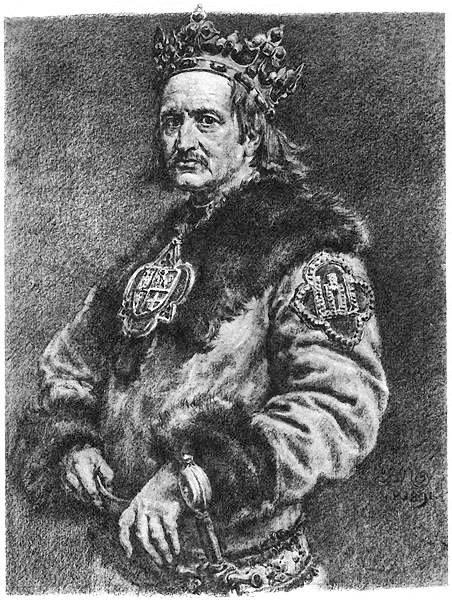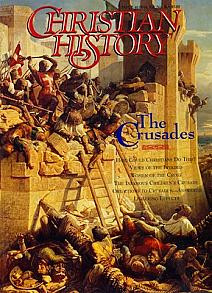ACCEPTING POLAND’S CROWN, JOGAILA CONVERTED LITHUANIA TO CHRISTIAN FAITH

[ABOVE: Jagiello (Jogaila) by Jana Matejko 19th century—public domain, Wikimedia.]
IN 1386 Poland was looking for a strong leader to help it recover lands lost by the Piast dynasty which had petered out in feebleness. Lithuania was looking for allies against the Tatars and the Russians (Moscow was expanding its reach) on their east and the Teutonic Knights on their west. Jogaila, Grand Duke of Lithuania, seemed to be the man to satisfy the needs of both nations.
Poland offered Jogaila (Jagiello to the Poles) the hand of princess Jadwaga and with it the crown. A key stipulation was that Jogaila had to become a Christian. He agreed. On this day, 15 February 1386, Jogaila and his cousin Vytautas were baptized in Cracow as Roman Catholics. Jogaila took the name Wladyslaw.
Three days later Jogaila married Jadwaga (English “Hedwig”), who was perhaps a third his age. Just how young she was is not known with certainty; perhaps as little as eleven, maybe as old as sixteen. Until 1399, when Jadwaga died, Jogaila had to share royal authority with her, although, like him, she may have spoken little or no Polish, having been raised in the west. She was already engaged (perhaps even married) and the prior arrangement had to be broken. Soon rumors of adultery swirled around her and she had to swear before God in Cracow’s cathedral that she had not cheated on her husband. In the end, she bore Jogaila only one child, a girl, both dying shortly after the birth. Jogaila would marry three times more.
Jogaila’s baptism was important for Lithuania. Although the rest of Europe had embraced Christianity, at least in name, Lithuania was still a pagan nation. During the Middle Ages, several nations adopted Christianity because their leaders converted to the faith. Examples include the West Saxons who followed Ethelbert into baptism, the Kyivian Russians who followed Vladimir, and the Franks who followed Clovis. Now Lithuania became another instance. Large numbers of Lithuanians received baptism early in 1387 and an archdiocese was founded at Vilnius.
The succession in Lithuania was hotly disputed both before and after Jogaila’s emergence as King of Poland. After many intrigues and battles, Jogaila’s cousin Vytautas (Witold to the Poles), emerged as Lithuania’s leader. Jogaila and Vytautas eventually found it necessary to set aside differences to beat back an onslaught by the Teutonic Knights. The pair broke the order’s power in 1410 at the Battle of Tannenberg (Grunwald to the Poles). Jogaila was noted for his mercy to those he defeated in war.
Politically, Jogaila had success in regaining Polish lands and established peaceful relations with Hungary. However, his attempts to unite Lithuania and Poland failed.
In the religious sphere, while he supported the followers of Hus in other countries in order to weaken his rivals, he persecuted Hussites where he held power. How deep was his understanding of the Christian faith? He was credited with the translation of the Lord’s Prayer and the Apostles’ Creed into Lithuanian, and he died “in the arms of the clergy.”
Jogaila’s legacy is disputed. To this day many Lithuanians believe he hurt their country by attempting to unify it with Poland. However, others claim his decisions show he was a Lithuanian patriot first and foremost. He even supported giving Lithuania its own king. Like his first wife, Jogaila’s fourth wife, Sofija (Sonka), was forced to take an oath that she had not committed adultery. Whatever her character, she became the mother of one of Poland’s greatest kings—Casimir IV.
—Dan Graves
----- ----- -----
Jogaila faced the Teutonic Knights. For more on their rise, read "The Fighting Monks" in Christian History #40, The Crusades






